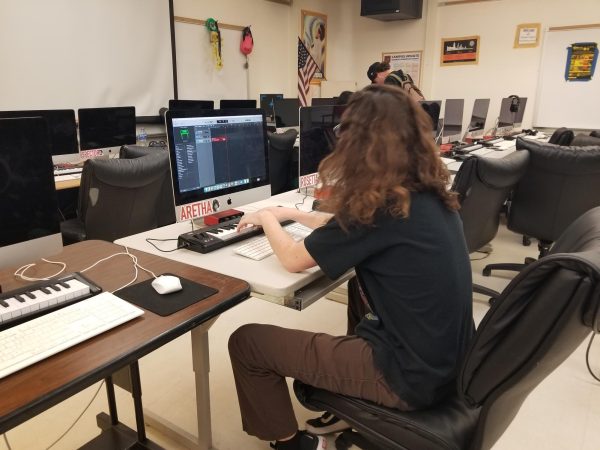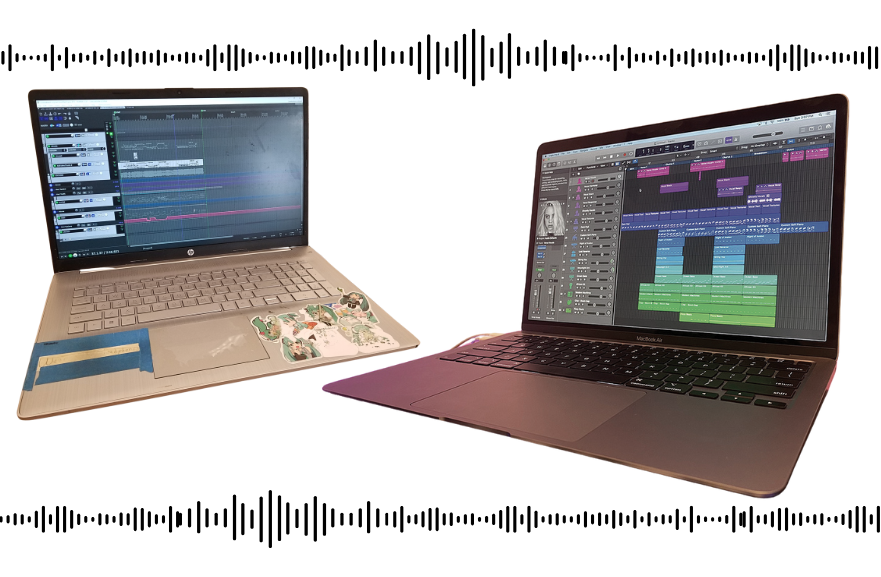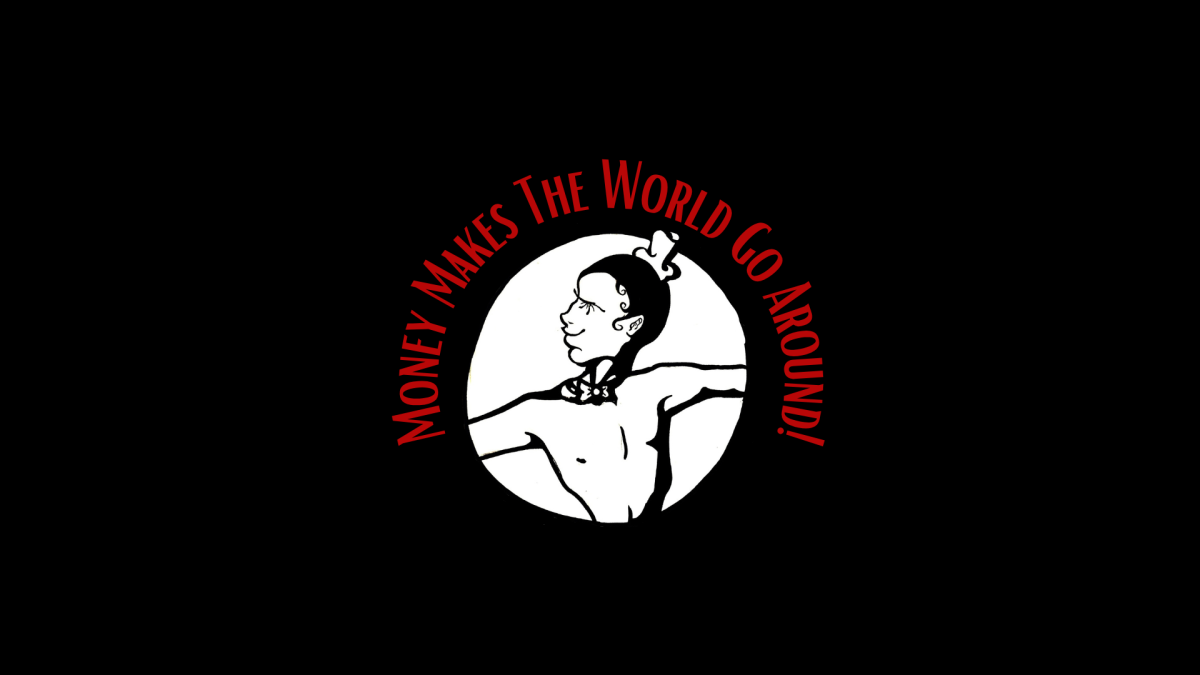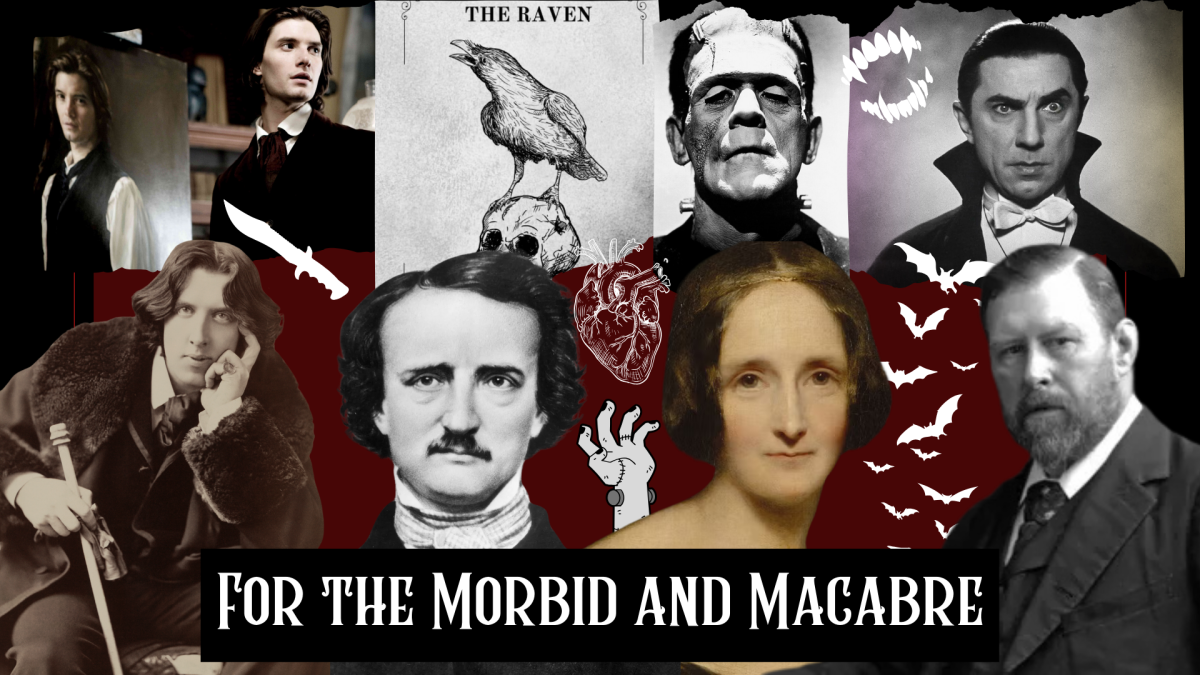For someone starting out, the thought of producing original music is as attractive as it is daunting—but starting is really quite easy. Whether it be a neo-soul rap beat or a shoegaze metal ballad, this guide will provide the necessary tools and knowledge to start producing any genre of music.
Digital Audio Workstations and Plug-ins
What is a DAW?
A Digital Audio Workstations (DAW) is a computer application that producers use to assemble different parts of a song. There is an array of DAWs on the market, so to understand which one to choose, it’s important to know the fundamental features of all DAWs and the subtle differences between different brands.
The basic function of a DAW is to allow the producer to record parts of a song one by one, and then play back all the layers simultaneously. These parts are recorded on “tracks.” The producer can then adjust the volumes of different tracks to make certain parts stand out more than others.
Any brand of DAW can do these basic tasks. For example, if a guitarist wanted to record a singer-songwriter piece, any brand is capable of recording a guitar on one track and their singing on another.
Another feature of DAWs are virtual instruments, also known as plug-ins. These virtual instruments can range from synthesizers to drum sets to folk instruments. Plug-ins are necessary for producers who aren’t able to record every instrument used in their music. For example, to add drums to a song without the financial and technical hurdles of learning the drums, a producer can add virtual drums through a DAW. This goes for any instrument—meaning that no one needs to learn an instrument to produce music.
Which DAW To Use?
There are a multitude of DAWs on the market, but three programs stand out for beginning producers.
Reaper is one option. It comes with an infinitely long free trial, rendering it essentially free. However, it doesn’t come with any virtual instruments. To make up for this, it’s very compatible with third-party plug-ins (virtual instruments from online sources). These can be less basic-sounding and help an artist build a unique sound. Also, Reaper is incredibly versatile—any genre of music can be produced on Reaper.
Drummer, producer, and Huntington Beach High School (HBHS) senior Jacob Young, recommends Logic Pro. It is $100 and only runs on Macs, but it’s worth its price.
“Logic has so many built in features that allow you to jumpstart your process. So many instruments, so many tools, everything that you need, and it’s very accessible. It’s expensive but it’s a one-time purchase, so no subscription,” said Young.
Lastly, many artists use Bandlab, which runs on any device, even Chromebooks! Bandlab comes with a myriad of beginner-friendly plug-ins. However, Bandlab lacks complicated features and does not work with 3rd party plug-ins, so it’ll eventually begin to feel limiting.

But that isn’t to say artists shouldn’t use Bandlab. Nor should they necessarily cough up the money for a Macbook and Logic Pro. The exact DAW an artist uses is not paramount. What’s more important is developing a strong understanding of how that DAW works—its niches, special functions, and limitations. These are things a producer learns as they go. Fortunately, video tutorials on the internet explain just about every feature of every DAW, so this knowledge is easy to develop.
As a rule of thumb, one’s knowledge of a tool matters much more than what tool is used. This goes for DAWs, plug-ins and instruments.
Learning an Instrument
No extensive music theory or instrument knowledge is required to produce music, but these skills certainly help.
Jade Hem, a beginning producer and student in the Music Production class at HBHS shares her experiences with learning production so far.
“I do think that people need to know the different types of instruments, like strings versus horns, but you don’t necessarily need to know how to play instruments. I don’t know any instruments, but I know the basis, so I know what sounds good with what,” said Hem.
Young recommends learning some basics on a keyboard instrument (like the piano). This is because many electronic keyboards can be connected to your computer to control virtual instruments in your DAW. This process is known as Musical Instrument Digital Interface (MIDI).
“You can emulate instruments and speed up your production flow with MIDI. I think the largest barrier for me is not knowing how to play keys,” said Young.
However, producers can still use virtual instruments by writing out instrument parts with a computer mouse. This is what many prefer to do, especially if the genre of music being produced is too difficult to play with a MIDI keyboard (for example, metal).
Learning Music Theory
Music theory studies how musical notes relate to emotions and feelings. Although this sounds very useful to writing music, it’s easy for artists to be discouraged by a daunting, formal education.
Jaxon Cunningham, bandleader of “Mox”, producer, multi-instrumentalist and HBHS junior recommends a minimum knowledge for producers.
“There are definitely some basics of music theory that you need to know, like keys and tempo. But you don’t really need a jazz education or anything,” said Cunningham.
An understated advantage of studying music theory is learning how other songs work, allowing you to draw from your inspirations.
An easy way to learn is to check out YouTube channels like 12tone, a channel dedicated to explaining music theory by breaking down well-known songs. Their series, Building Blocks, provides more than enough knowledge for someone just getting started.
Starting to Write and Getting Stuck
How does an artist start writing music? Cunningham emphasizes the importance of mimicking inspirations.
“You could start by copying people you like to listen to and slowly branching off and working on your own ideas and making something completely unique to you,” he said.

Music, like any other art form, requires trial and error. Any producer’s first pieces of music might not meet their expectations. One might dedicate themselves to perfecting their first few songs, only to run into the same barriers again and again. It’s easy to get stuck, which can be discouraging in the early phases of producing music.
“Most of it’s just screwing around until you find something that works. I mean, I made so much crap before I started making good pieces of music. And that’s completely normal, that’s kind of what you should do,” said Cunningham.
Young recommends writing many short snippets of music if you keep getting stuck in the middle of full-length songs. Producing many short, but new ideas helps develop the skills to work on longer pieces of music.
“Try everything, if what you make sucks, just keep going. Trial and error is the biggest way to get involved and make things that you like. Even if you end up scrapping the song, it’s still beneficial to the whole production process and the musical development of yourself. The more practice you get, the better your end product will be as you work at it,” said Young.
Writing music opens the door to new avenues of growth, exploration, and most importantly, self-expression. Producers learn to innovate and find a unique, personal sound as they pick up new skills and tools. It’s sure to be a worthwhile passion—don’t be afraid to start!








